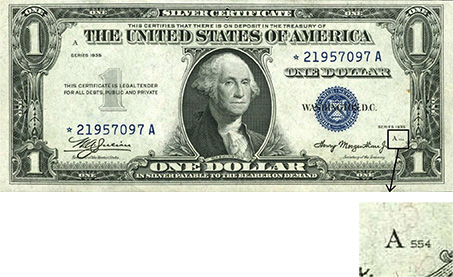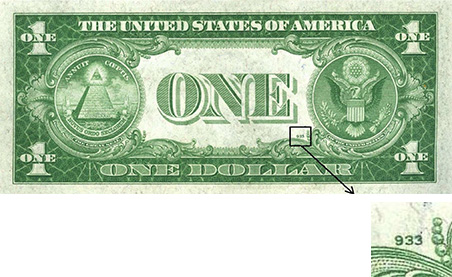
NOW Articles Written By Members
A look back at a common, but classic commemorative – Wisconsin’s Territorial Centennial
A side-tracked story: Mardi Gras Doubloons
A look back at a collecting specialty – the O.P.A. ration tokens of WWII
Bullion And Coin Tax Exemption – Act Now!
Is There A Twenty Cent Piece We Can Add To A Collection
Capped Bust Half Dollars: A Numismatic Legacy
U.S. Innovation Dollars: Our Most Under-Collected Coin?
My 2023 ANA Summer Seminar Adventure
In defense of the American Women's Quarters
A look back in numismatic history – the Hicksville Silver Dollar Hoard
The proofs so few of us collect: Jefferson Nickels
A look back in numismatic history – a story too good to be true
Kilroy promotes war bond sales
Just passing through a short-lived bank
The Kewaunee Line Encased Coin Folder
Lyman C. Draper: Collector, Historian, Genealogist
>> More articles in the Archive
For more NOW Articles Written By Members,
<< More articles in the Archive
1935 and 1935A $1 Silver Certificates
[by Bill Brandimore #96L]

The 1935 $1 silver certificate was a new design, replacing the 1934 $1 silver certificate which retained the “Funny Back” design from the 1928 issues, but added a large blue numeral one to the left of Washington’s portrait on the face of the note. The new 1935 design featured an “All Seeing Eye” above a pyramid on the left and the Great Seal on the right, but retained Washington’s portrait on the face. The notes were, of course, issued during the midst of the Great Depression and were generally well used. Not too many collectors were putting away packs of notes for posterity. The notes were signed by The Secretary of the Treasury, Henry Morgenthau Jr. and Treasurer W.A. Julian. Their terms coincided from January 1, 1933 to July 22, 1945. Generally signature changes or major design changes call for the designation of a new series. The 1935A series was introduced because of a very slight design change. The Face and Back plate numbers had been ½ of 1 millimeter high throughout the 1928 issues, the 1934 issue and the 1935 issue. A change was made for the 1935A issue, enlarging the Face and Back plate numerals to a full 1 millimeter in height. I can tell them apart rather easily because I can read the 1 millimeter numerals, but need my magnifier to read the ½ millimeter size.
Because of this slight change, some interesting developments took place that would impact currency collectors. At that time in America’s conduct of business, bureaucrats were still careful of the tax payer’s pocketbooks. Thus, it didn’t make much sense to toss out the 1935 back plates before they wore out just because of a minor change in the size of back plate numerals. In addition, when the 1935A issue began production, the Bureau of Engraving and Printing was still printing 1935 notes. The plates became interchanged and for a short period of time some of the 1935 notes were printed with the somewhat larger Back plate 18 numerals of the 1935A series. Notes with different sized plate numbers on the Face and Back are known as MULES. As production of the 1935A series ramped up some of the 1935 Back plates were used in printing them, creating 1935A note mules with the smaller Back plate numerals of the 1935 plates. By the time we went into the 1935B issue some years later the 1935 plates were well used and no Mules are known for notes of 1935B and beyond.
In addition, no Mules are known for the 1935A $1 Hawaiian notes or the 1935A North Africa notes. The 1935A R and S Experimental notes are also unknown in Mule varieties.

For collectors, the ramifications are several. 1935 Mule notes are scarcer than the regulation items. Some of the scarcer blocks carry values of up to $500 in Gem Uncirculated condition. Some 1935A Mules carry values of up to $500 as well, with the rare DB block valued at $1,000 currently. The Star notes are even better, with the 1935 Mule star valued at $9,000 in Gem and $2,000 in Very fine Condition. The 1935A Mule star carries a price tag of $1,300 in Gem condition.
This makes for a great opportunity to look for Mules in old piles of well circulated 1935 and 1935A $1 silver certificates. Even in Very Good condition these notes are generally worth $20 each or more. The same thing happened in other issues. Look for Mules in the 1928 $2 Legal Tender notes of 1928C and 1928D; the $5 Legal Tender notes of 1928B, 1928C; $5 Silver Certificates 1934, 1934A, 1934B, and 1934C. This phenomenon also occurs in $10 silver Certificates of 1934 and some Federal Reserve notes of all denominations. For more information on which blocks have Mule representatives consult the Schwartz/Lindquist Standard Guide to Small- Size U.S. Paper Money. There are also a few Mules in some of the Large Size notes, the 1901 $10 Buffalo Legal Tender and the $5 1899 Indian chief notes in particular. Now consider yourself armed for Cherry Picking!
Have an interesting numismatic topic you’d like to share with your fellow NOW members?
Send your article to evan.pretzer@protonmail.com today!!!